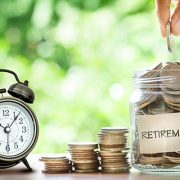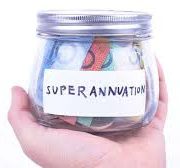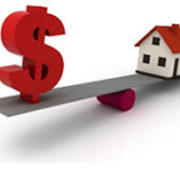USING SUPER TO BUY YOUR FIRST HOME
In the 2017 Federal Budget, the government announced its intention to introduce legislation that would allow first home buyers to access part of their super to purchase a home. The proposal is referred to as the First Home Super Saver (FHSS) scheme.
The relevant legislation was introduced into parliament in early September 2017 and at the time of preparing this article (late October 2017), the legislation is before the Senate.
How the scheme will work
The FHSS scheme will allow people to withdraw up to 85% of voluntary concessional contributions and up to 100% of non-concessional (after-tax) contributions, with the associated earnings on those contributions and use them towards the purchase of their first home.
Voluntary contributions include concessional contributions – contributions other than compulsory employer contributions, such as the 9.5% superannuation guarantee contributions – and non-concessional contributions – those made from after-tax income. A voluntary concessional contribution may include additional employer contributions made under a salary sacrifice arrangement and/or personal tax-deductible contributions.
The scheme will only allow access to voluntary contributions made from 1 July 2017. Voluntary contributions made in past years cannot be accessed under the FHSS scheme.
Contributions that may be withdrawn are limited to a maximum of $15,000 per annum, capped at a total of $30,000 plus associated earnings. This limit is ‘per person’. A couple may, therefore, have access to up to a combined $60,000 plus earnings.
Withdrawals under the FHSS scheme cannot be made before 1 July 2018.
Amounts withdrawn (other than non-concessional contributions) will be taxed at the individual’s marginal tax rate, however, a tax offset of 30% will apply.
Eligibility
There are a number of conditions that need to be met for a person to be eligible to participate in the FHSS scheme, including:
1. A person must not have previously held a freehold interest in real estate property in Australia in the past. This not only includes a principal residence but also extends to investment and commercial property.
2. While people under the age of 18 are able to make contributions to superannuation and are able to participate in the scheme, only a person aged 18 or over will be able to request the release of funds.
3. A person will only be able to submit a request for release of benefits provided they haven’t previously submitted a request. That is, payments under the scheme can only be accessed once.
Associated earnings
A person participating in the FHSS scheme may withdraw their contributions, plus associated earnings.
Rather than having to calculate the actual investment earnings on each contribution made under the scheme, a simplified approach is used to calculate the earnings.
For voluntary contributions made under the FHSS scheme during the 2017/18 financial year, the associated earnings will be calculated as if the contributions were made on 1 July 2017, irrespective of the date they are actually made. From 1 July 2018, associated earnings will be calculated from the first day of the month in which the contribution is made. Therefore, where contributions are made at different times during the year, associated earnings will need to be calculated in respect of each contribution.
Associated earnings have nothing to do with the actual investment earnings that may be derived by a superannuation fund in respect of the contributions. They are merely used to determine the amount that may be withdrawn from super under the FHSS scheme in addition to voluntary concessional contributions.
When calculating associated earnings, the ‘shortfall interest charge’ is used, and compounds daily. The shortfall interest rate is the 90 day Back Accepted Bill rate plus 3%. At the time of writing, the shortfall interest rate was 4.7%.
Releasing contributions
When a person wishes to withdraw contributions under the FHSS scheme, the Australian Taxation Office (ATO) will make an FHSS determination. The ATO will calculate the person’s eligible voluntary contributions and the associated earnings. The total amount is referred to as the ‘FHSS maximum release amount’.
If a person then wishes to withdraw that amount from the super, they will need to request the ATO to issue a release authority. This will then be given to their superannuation fund. A fund will be unable to release benefits under the FHSS without the release authority.
After funds have been released
Once the funds have been released, they must be used to assist with the purchase of a first home.
A person will have 12 months from the date of release to use the funds to enter a contract to purchase or construct their first home. The 12 month period may be extended at the ATO’s discretion.
Once the purchase is complete, the purchaser must live in the property for a period of at least six months in the first year. The FHSS scheme is not intended to be used to purchase an investment property.
Where a property is not purchased within 12 months, the released amount must be re-contributed back to super, or additional FHSS tax becomes payable. The tax payable on the released amount is equal to 20% of the amount released.
Is the FHSS scheme a good thing?
Making voluntary contributions to super with the view of withdrawing them to help purchase a first home will depend on an individual’s personal circumstances. Making additional voluntary contributions to super provides discipline. The money can’t simply be accessed for other purposes such as an overseas trip or a new car. It is set aside for the purchase of a first home, or it is locked away for retirement.
In the end, individuals will need to consider their own situation when deciding if the scheme is appropriate for them. Appropriate financial advice will be essential.
Source: Peter Kelly | Centrepoint Alliance









